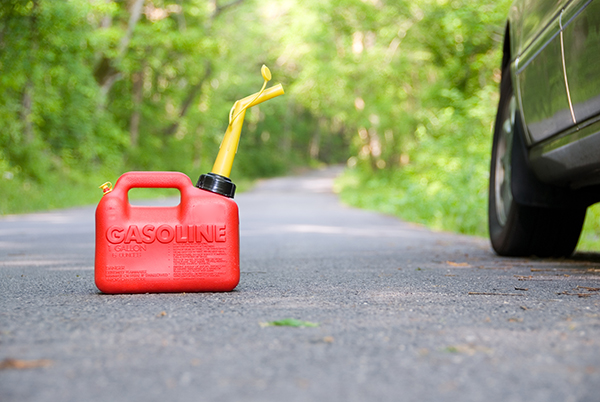Survival first aid: How to handle different trauma scenarios
05/10/2023 / By Zoey Sky

When dealing with an emergency situation, you may sometimes need to treat common traumatic injuries like burns, concussions or even gunshot wounds due to accidents or rioting in your area.
To prepare for scenarios like this, learn basic first aid skills. Your skills might even save a life, especially when emergency medical services (EMS) are delayed or unavailable. (h/t to PreppersWill.com)
Items for a trauma first aid kit
When preparing your bug-out bag or survival bag, make sure you also have a trauma first aid kit. This includes items different than the ones in your basic first aid kit:
- An assortment of regular dressings ranging from 4x4s and 5x9s to ABD
- Combination of bandage wraps (4″ and 6″ Israeli Bandage, Ace wraps, etc.)
- Heavy-duty 1″ and 2″ tape
- Hemostatic dressings of different sizes and purposes (e.g., Quik Clot, Celox)
- Open chest injury seals in multiple sizes
- Tourniquets
Gunshot trauma
If you’ve received first aid training, you may already be familiar with the “ABC” concept:
- Airway
- Breathing
- Circulation
But if you’re treating a gunshot wound, you should prioritize circulation.
Stop the bleeding
Apply direct pressure to the wound, elevate the affected area and use a pressure bandage. If you have one in your first aid kit, use an Israeli Emergency Bandage.
If you don’t have one, improvise with a clean towel or bandana. If direct pressure doesn’t control the bleeding, consider applying a hemostatic agent like Quick Clot and you continue to maintain pressure.
Address shock
Treat for shock concurrently with the other steps. Keep the patient covered for warmth unless you have to check their wounds.
Examine the entire body for wounds
Do not rely solely on identifying entry and exit wounds since bullets can cause complex injuries.
Examine the patient thoroughly because bullets may hit bones, fragment and travel anywhere within the body. This may be the case if the patient was injured by special bullets designed to inflict multiple injuries. (Related: Prepping must-haves: Medical supplies and first aid kits.)
How to treat gunshot wounds in arms or legs involving bones
When treating gunshot wounds in the arms or legs involving bones, elevate the wound above the patient’s heart and apply a pressure bandage. If bleeding persists, use your clean fingers to apply pressure to the brachial artery for arm wounds or the femoral artery for leg wounds.
In critical situations, you may be forced to choose between saving the patient’s limb or their life.
Rapid swelling in the affected limb indicates internal bleeding or potential bone damage. If this is the case, splinting the area is necessary.
How to treat gunshot wounds in the chest
Open chest wounds or “sucking chest wounds” can cause a collapsed lung due to air entering the patient’s chest cavity. To treat this type of injury, close the wound using an occlusive dressing.
If commercial chest seals aren’t available, improvise with a clean plastic bag taped on three sides.
Move the patient very carefully since the spine is located at the back of the chest. Minimize movement to avoid spinal cord damage.
If their heart, lungs, spine, or major blood vessels are affected and expert medical care is unavailable, your options are limited.
Most of the time, it’s better not to remove an embedded bullet because it can be hard to locate and may be obstructing a major blood vessel.
Unless there’s an initial infection, the body usually adapts to metallic fragments without severe complications, as proven by military personnel living with shrapnel still in their bodies.
Head trauma and concussions
Head injuries can be categorized into three groups:
- Prolonged unconsciousness (more than five to 10 minutes)
- Brief loss of consciousness
- No loss of consciousness
Prolonged unconsciousness
If the patient remains unconscious for more than five to 10 minutes, it may be a sign of significant brain injury. Start by assessing the victim’s airway and perform rescue breathing if needed.
If there are also any associated neck and spine injuries with severe head trauma, immobilize the victim’s spine.
If immediate evacuation is not an option, maintain spine immobilization and ensure the victim’s head is pointed uphill. If they vomit, quickly roll the victim onto their side.
Carefully monitor their airway for signs of obstruction, such as noisy or labored breathing and a decreasing respiratory rate.
Brief loss of consciousness
Short-term unconsciousness followed by the victim waking up after a minute or two, then eventually regaining normal mental status and physical abilities suggests a concussion.

Concussions don’t usually cause permanent damage, but the patient may experience confusion or amnesia about the event and repetitive questioning.
Try to observe the victim for at least 24 hours and prevent them from taking part in potentially hazardous activities.
Set alarms if needed and regularly interrupt their normal sleep every three to four hours to quickly assess their condition. This also confirms that they can be easily awakened.
If the patient is increasingly lethargic, confused, combative or displays other worrying signs (like those listed under “No loss of consciousness” below), you need to focus on maintaining and supporting essential life functions such as their airway and breathing.
No loss of consciousness
If someone hits his/her head but doesn’t lose consciousness, you don’t always have to worry. However, they may experience side effects like bleeding from a scalp wound, a mild headache, a concussion or a noticeable bump on their head.
Watch out for serious symptoms, such as:
- Progressive worsening headache
- Persistent or projectile vomiting, or vomiting that shoots out under pressure
- A significant difference in their pupil size
- Gradual deterioration of consciousness from alertness to drowsiness or disorientation. Confirm the patient’s orientation by asking their name, location, current date and what happened. If they correctly answer all four questions, they are oriented.
- Unexplained bleeding from their ear or nose or clear, watery fluid draining from the nose
- Bruising behind the ears or around the eyes without any direct injury to those areas
- Seizures
If the patient experiences any of these symptoms, seek immediate medical attention.
If you are dealing with a survival situation without access to EMS, focus on maintaining and supporting essential life functions, including the airway and breathing. Ask for help and seek the best alternative available resources and assistance.
Traumatic amputation
Proper treatment of a patient who has experienced an amputation is influenced by different factors and your priority lies in managing potentially life-threatening conditions.
Keep in mind that managing amputations due to blunt trauma becomes complex due to concerns about any additional injuries.
Blunt trauma amputations often occur in situations involving high-energy transfer, like collapsed buildings after earthquakes, car or industrial accidents, or debris from a tornado.
These accidents frequently include the possibility of multisystem trauma, which means you have to also examine the victim for other injuries. Remember that the most apparent injury isn’t always the most significant.
Evaluate and treat partial amputations as if they were fully intact.
When treating cases of complete amputation without access to EMS, there is little to no chance of saving the severed limb for possible reattachment.
Treatment steps:
First, quickly control major bleeding by applying direct pressure and elevation.
If pressure and elevation fail, apply tourniquets. Place the tourniquet as close as you can to the amputation site.
Next, sustain and support essential life functions. Measures such as airway control and maintaining body temperature can help delay life-threatening shock.
Thoroughly flush the area with a diluted solution of Betadine (povidone-iodine) or sterilized saline solution with a 60cc to 100cc irrigation syringe. If you lack commercial sterile solutions, use clean drinking water to help keep the wound clean in austere environments.
Apply a saline-moistened sterile dressing over any exposed tissue to minimize further contamination or injury to the victim. Cover the moist dressing with a dry, sterile gauze dressing.
Replace the dressing at least once a day, or more frequently if you have the resources to do so.
If an extremity is involved, apply a splint for added support and stabilization.
Severe cuts and puncture wounds
In medical terms, deep wounds refer to injuries that penetrate more than 1/4 below the skin’s surface.
These wounds have a higher risk of damaging the victim’s ligaments, major blood vessels or arteries, tendons or even their organs. The depth of the wound can cause both internal and external bleeding.
Deep wounds often include cuts or puncture wounds.
Before treating a wound, protect both yourself and the patient from blood-borne illnesses by wearing nitrile gloves. Alternatively, you can use improvised materials like plastic bags or a towel.
Use your hand to apply pressure to the injury and elevate it above the heart level. If this stops the bleeding, but it resumes when pressure is released, create a pressure dressing and apply direct pressure to a pressure point.
Upper arm or elbow wounds
Locate the brachial artery on the inner side of the victim’s arm. It should be above the elbow bone, between their large upper arm muscles.
Groin or thigh wounds
Look for the femoral artery in the middle of the crease at the bottom of the groin. This is between the groin and the upper thigh or the victim’s “bikini line.”
This artery may require significant pressure. If this is the case, press down with the heel of your hand to reduce circulation.
Lower leg wounds
Press the back of the patient’s knee directly behind their kneecap until you locate the popliteal artery.
Avoid bending or moving the leg to reach a more convenient location. Carefully reach around to the back of the patient’s leg and apply pressure upward.
Hand or foot wounds
On the inside of the wrist, move away from the victim’s thumb toward the forearm’s tip.
For foot wounds, trace above the front or top of the victim’s foot where it meets the shin.
In both cases, check for a pulse before applying pressure. If these methods are unsuccessful, apply a tourniquet and tighten it until it stops the bleeding.
When dealing with a medical situation, prioritize personal safety and use available resources properly to ensure patient safety, especially when emergency medical services are delayed or unavailable.
Visit EmergencyMedicine.news for more tips on how to handle medical emergencies after SHTF.
Watch the video below for tips on how to prevent the infection of small injuries.
This video is from the Alex Hammer channel on Brighteon.com.
More related stories:
Survival first aid: Understanding the medic’s priority.
Survival essentials: 7 Items you need in your trauma first aid kit.
Why you need a first aid kit and trauma kit for various medical emergencies.
Sources include:
Submit a correction >>
Tagged Under:
disaster, emergency medicine, first aid, homesteading, off grid, preparedness, prepper, prepping, SHTF, survival, survival medicine, Survival Tips, trauma, trauma response, traumatic injuries
This article may contain statements that reflect the opinion of the author
Get independent news alerts on natural cures, food lab tests, cannabis medicine, science, robotics, drones, privacy and more from NewsTarget.com
Get independent news alerts on natural cures, food lab tests, cannabis medicine, science, robotics, drones, privacy and more from NewsTarget.com
RECENT NEWS & ARTICLES
COPYRIGHT © 2017 · SURVIVAL NEWS





















